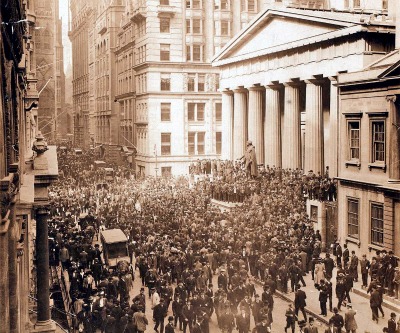
Smithsonian.com’s blog Past Imperfect posted a great read this week that looks at the life of “young, brash, charismatic” Frederick Augustus Heinze who amassed a fortune before the age of 30 from the copper mines of Butte, Montana.
Heinze arrived in New York in 1907 with $25 million in cash (some $600 million in today’s money) to make his name on Wall Street, but “by the end of the year the Copper King would be ruined, and his scheme to corner the stock of the United Copper Co. would lead to one of the worst financial crises in American history—the Panic of 1907”:
In a rapid ascent, Heinze established the Montana Ore Purchasing Co. and became one of the three “Copper Kings” of Butte, along with Gilded Age icons William Andrews Clark and Marcus Daly. Whip smart and devious, Heinze took advantage of the so-called apex law, a provision that allowed owners of a surface outcrop to mine it wherever it led, even if it went beneath land owned by someone else. He hired dozens of lawyers to tie up his opponents—including William Rockefeller, Standard Oil and Daly’s Anaconda Copper Mining Co.—in court, charging them with conspiracy. “Heinze Wins Again” was the headline in the New York Tribune in May of 1900, and his string of victories against the most powerful companies in America made him feel invincible.
Continue reading at Smithsonian.com